Before we get going onto the next part of the Pashto alphabet, let’s review the first two major families. First, “alef”:
ا alef
Remember that “alef” is a non-connecting letter, with only two forms – isolated and final. It is very recognizable because it shows up in Arabic, too.
…
First Family – As you can see, after “alef” the first family shares the same basic curled shape and only differs in where the diacritical notations are added.
ب be
پ pe
ت te
ټ Te
ث se
See the similarities?
The second group shares many characteristics. I see the second family as really the reverse-J shaped cohort, again only differing with where diacritics are placed.
Second Family
ج jim
ح he
خ khe
چ che
څ tse
ڂ dze
And there you go. The first two Pashto alphabet families delivered to your doorstep in manageable, bite-sized pieces.
If you’ve forgotten how each letter changes forms in its isolated, initial, medial, and final forms, consult Part II for the first family and Part III for the second family.
The next letter we’ll be trying to remember is another non-connecting letter, just like “alef”. It only has two forms – isolated and final – just like “alef”.
د daal
Transliteration: d
Again, “daal” does not join to the letters preceding and following it, as most Pashto letters do.
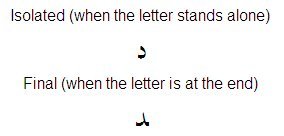
ډ Daal
Transliteration: D
“Daal” is the fourteenth letter in the Pashto alphabet. Like its predecessor “daal”, “Daal” is a non-connecting letter and therefore has only two forms: isolated and final.
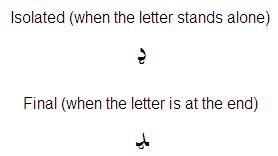
As you can see, unlike “daal”, “Daal” has different isolated and final forms. Practice on a piece of paper to get this one if it helps.
ذ zaal
Transliteration: z
Notice any patterns? “zaal” is also a non-connecting letter and shares the slanted, reverse-L figure with “daal” and “Daal”. It has a dot on top, but like the previous two has just isolated and final forms.
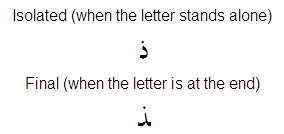
ر re
Transliteration: r
The letter “re” is different in shape. Notice how the isolated form is missing the top cross marking that the final form has. Luckily there are only two to remember!
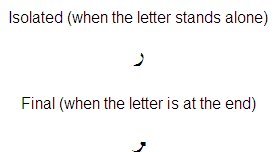
ړ Re
Transliteration: R
“Re” is the same as “re” except for the curled semi-oval attached to it.
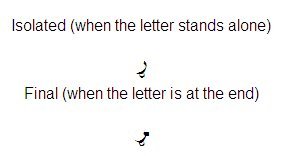
Good job! We’ve just covered another 5 letters of the Pashto alphabet. In the next post, we’ll continue with this “daal”-shaped family. See you soon!










Comments:
Bob:
Nothing worth doing is ever easy. LOL. I’m currently learning Pashto. While I enjoy BYKI’s program it doesn’t teach how to speak Pashto. It does give some phrases and so forth but it doesn’t teach structure. I hope that in the future it will. Great site and blog. Thank you very much for doing this.